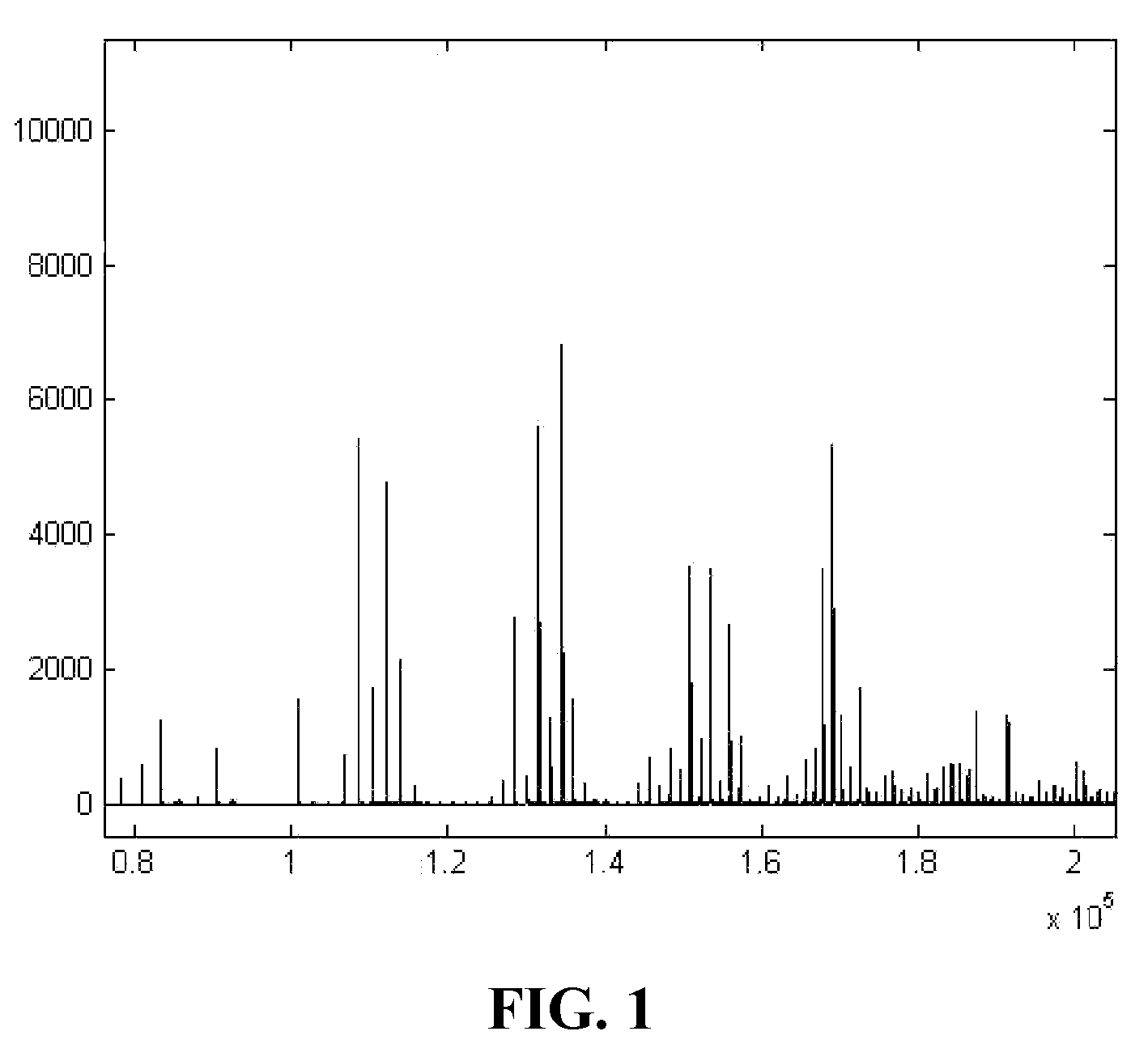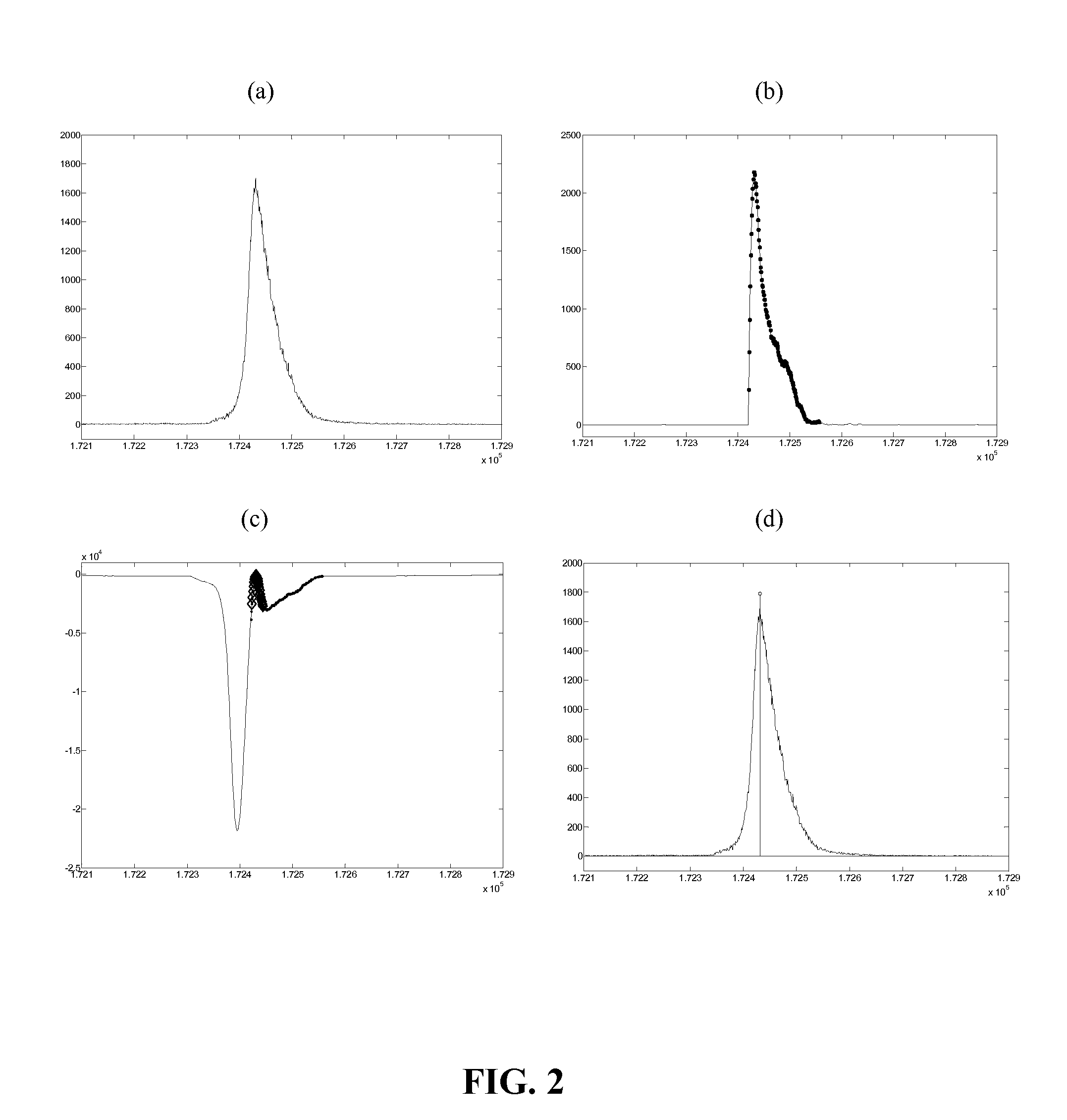Automatic peak identification method
a peak identification and peak technology, applied in the field of analysis data, can solve problems such as spectral resolution decline, and achieve the effects of low computational intensity, minimal artifacts, and high resolution
- Summary
- Abstract
- Description
- Claims
- Application Information
AI Technical Summary
Benefits of technology
Problems solved by technology
Method used
Image
Examples
Embodiment Construction
[0012]The following symbols are accorded the following meanings:[0013]N total number of data points in the window[0014]sj=s(tj) j=1 . . . N observed signal prior to any processing[0015]xj=x(tj) ideal wavelet shape[0016]ηj=η(tj) noise[0017]ση2=ηηT noise co-variance
[0018]Herein we describe the use of Bayesian methods to automatically identify peaks in data sets. We start with a brief overview of the logic. The first step is to compare the hypotheses that there are a given number of peaks (i.e., 0, 1, 2, . . . n) in the observation window. If a peak is present, we then estimate its position and amplitude via parameter fitting.
[0019]After this summary of the logic, we develop algebras for two simple cases where Gaussian or Poisson noise is involved. Both of these cases are simple enough that all results can be arrived at in closed form. We first present how to derive a matched filter for a known peak shape that is embedded in additive white (Gaussian) noise of unknown amplitude. We then...
PUM
 Login to View More
Login to View More Abstract
Description
Claims
Application Information
 Login to View More
Login to View More - R&D
- Intellectual Property
- Life Sciences
- Materials
- Tech Scout
- Unparalleled Data Quality
- Higher Quality Content
- 60% Fewer Hallucinations
Browse by: Latest US Patents, China's latest patents, Technical Efficacy Thesaurus, Application Domain, Technology Topic, Popular Technical Reports.
© 2025 PatSnap. All rights reserved.Legal|Privacy policy|Modern Slavery Act Transparency Statement|Sitemap|About US| Contact US: help@patsnap.com



